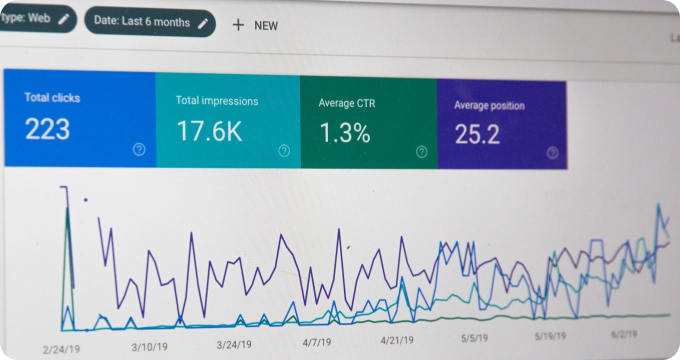7 Things I Wish I'd Known About Evidence Management Software Before Implementing It
- February 08, 2024
- 3 minutes
In the realm of criminal justice and law enforcement, the role of evidence management is paramount. The shift from analog to digital has ushered in a range of software designed to simplify this process and enhance efficiency. However, as with any technology, there are nuances and complexities that need to be understood before implementing evidence management software. Let's now delve into seven critical insights that I wish I'd been aware of prior to the implementation of such a system.
-
Understanding the Scope of Evidence Management
Evidence management isn't merely the electronic storage of physical evidence. It is an all-encompassing management system that records, preserves, tracks and makes accessible all forms of evidence - from physical items like weapons or clothing, digital data like emails or social media posts, to intangibles like testimony or alibis. The software serves as a comprehensive repository for all evidential elements, ensuring their integrity and facilitating their retrieval when necessary. Therefore, understanding the vast scope of evidence management is critical before venturing into software implementation.
-
Recognizing the Significance of Integration
In the world of mathematics, the concept of integration represents the idea of bringing together disparate elements to create a more comprehensive, more significant whole. The same principle applies to evidence management software. It should ideally integrate smoothly with other systems used by your department, such as records management systems (RMS), computer-aided dispatch (CAD), and body-worn camera software. The better the integration, the smoother the workflow, and the less time officers will spend on administrative tasks.
-
Grasping the Importance of Chain of Custody
In the domain of law and criminology, the 'chain of custody' refers to the chronological documentation or paper trail, showing the seizure, custody, control, transfer, analysis, and disposition of evidence. It is a critical facet of evidence management, as a broken chain can compromise the evidence and hinder legal proceedings. Any software chosen must maintain an unimpeachable chain of custody, automatically logging every interaction with the evidence.
-
Assessing the Need for Scalability
Economic theory posits that scalability – the ability of a system to expand to accommodate growing amounts of work gracefully – is a key determinant of long-term viability. The same holds in the sphere of evidence management software. The system must be scalable, capable of managing a few pieces of evidence today and thousands tomorrow, without hampering performance or efficiency.
-
Being Aware of Security and Compliance
In the age of cyber threats and data breaches, the security of evidence management software is paramount. It should adhere to the highest standards of data protection, ensuring that evidence remains uncompromised and confidential. Moreover, it should comply with industry standards and regulations, such as the Criminal Justice Information Services (CJIS) Security Policy in the U.S.
-
Acknowledging the Necessity for Training and Support
Evidence management software can be as intricate as a statistical model, and just as bewildering for the uninitiated. Thus, training for all users is a must. But training shouldn't be a one-time event. Regular updates and ongoing support should be part of the package, helping users stay abreast of new features and troubleshoot problems as they arise.
-
Evaluating the Cost and Return on Investment
Lastly, economic considerations should not be overlooked. While such software may seem like a significant investment, one must weigh the cost against the return. Improved efficiency, reduced redundancy, and minimized risk of evidence mishandling are some tangible returns. In the long run, a robust evidence management system can save time, resources, and potentially, lives.
In retrospect, an understanding of these seven elements would have significantly streamlined the process of implementing evidence management software. It is hoped that sharing these insights will aid others in their journey towards leveraging technology for justice. The promise of digital transformation in the realm of evidence management is immense, but like all promises, it must be approached with wisdom, understanding, and a clear-eyed view of the challenges that lie ahead.
Learn More
Unleash the power of efficiency and accuracy in your organization by diving deeper into our enlightening blog posts about evidence management software. For a comprehensive understanding, the reader is encouraged to explore our impartial rankings of Top Evidence Management Software.
Popular Posts
-
 6 Compelling Reasons Why Your Law Enforcement Agency Needs Evidence Management Software
6 Compelling Reasons Why Your Law Enforcement Agency Needs Evidence Management Software
-
 The Future of Evidence Management Software: Predictions and Emerging Trends
The Future of Evidence Management Software: Predictions and Emerging Trends
-
 Ask These Questions to a Software Vendor to Choose the Right Evidence Management System for You
Ask These Questions to a Software Vendor to Choose the Right Evidence Management System for You
-
 10 Essential Questions to Ask Your Evidence Management Software Provider
10 Essential Questions to Ask Your Evidence Management Software Provider
-
 7 Things I Wish I'd Known About Evidence Management Software Before Implementing It
7 Things I Wish I'd Known About Evidence Management Software Before Implementing It






